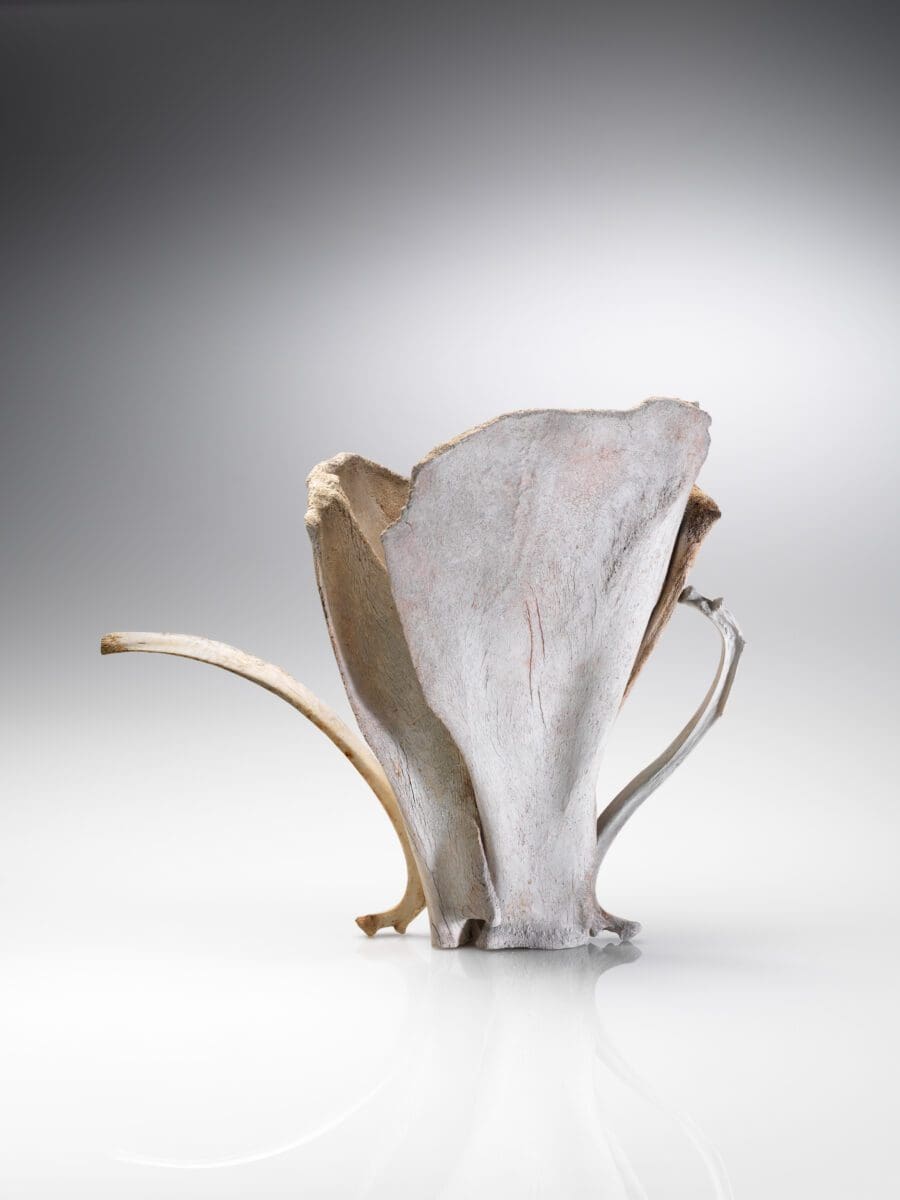
Piercing the veil
A new exhibition at Buxton Contemporary finds a rich complexity in the shadowy terrain between life and death.

Catherine Truman, After Hans, 2022, found and gifted bones – kangaroo and dairy cow, wood, felt, H 450 x L430 x W 300mm. Photograph by Grant Hancock.

Catherine Truman, After Hans, 2022, found and gifted bones – kangaroo and dairy cow, wood, felt, H 450 x L430 x W 300mm. Photograph by Grant Hancock.

Catherine Truman, After Constance, The Invaders (detail), 2022.

Catherine Truman, Flood, 2022.

Catherine Truman, Milk Jug, 2022, Found and gifted bones–kangaroo and dairy cow, H 300 x L360 x W 200mm. Photograph by Grant Hancock.
Gardens tell us a lot about the natural world and the ways in which humans respond to and shape their surroundings. Through the making of gardens, social concerns become known, as does the tension between the constructed and natural.
Catherine Truman, an artist who works between science and art, spent a year researching at Adelaide’s historic Carrick Hill estate, emerging with a body of work that speaks to this relationship, while also acknowledging the colonial history of the site. “Because of the intimate, domestic setting of the house, I’ve been able to really look at these aspects of how we accept the science [of the environment] in our daily lives,” she says.
The Arrangements: Assembling Nature probes the space between nature and humans. Some of the more sculptural works use real plant and animal matter, such as branches and bones, to create domestic objects. Others mimic nature with synthetic materials, but are presented under domes, appearing as though in a science museum. What is real, and what is artificial, is often indistinguishable.

“I was thinking about the way that we bend nature to our needs,” Truman says. “It’s very much a domestic set of objects that brings the outside in to remind us that nature has affected the way we have been in our lives, and the choices we’ve made.”
While some of Truman’s findings and presentations are damning about the impact of humans on the natural environment, she hopes visitors will take away an optimistic message, as she has. “I hope it generates positive conversations and hope for the future,” she says. “I’m thinking about the bigger issues that are all-pervasive, and to be able to express them on an intimate level is a very potent way to practise as an artist.”
The Arrangements: Assembling Nature
Catherine Truman
Carrick Hill
1 March—28 May
This article was originally published in the March/April 2023 print edition of Art Guide Australia.